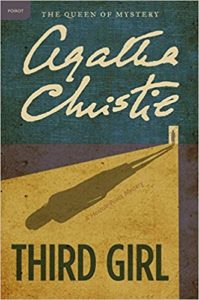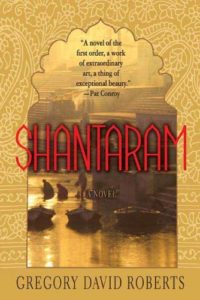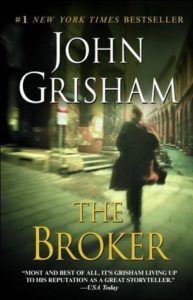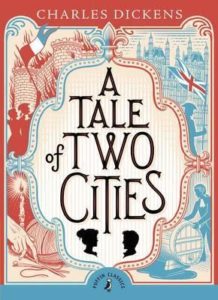I freely admit to trawling newspaper crime reports for ideas of the kind to scare the middle classes witless. Like having your identity stolen by a fraudster. One story caught my eye a few years ago: a woman owned an expensive house in London and used a rental agent to let it to tenants. She lived in another part of the country and the London property was not mortgaged. When it was vacated by one tenant and let to the next, an elaborate scam ensued. A criminal gang had taken the tenancy, with one of the ring now changing her name legally to that of the owner and obtaining a passport in that name. With this official ID, the gang proceeded to put the house up for sale and sell it for £1.3 million.
The report inspired the central fraud plot of Our House and made me wonder about the irresistible allure of identity theft and imposters in fiction. Yes, some alternative identities are created for the cold-hearted facilitation of a crime—or, in the case of witness protection, in a bid to escape personal jeopardy—but sometimes it’s more emotionally complex than that. There might be family demons to flee or simply a yearning for a fresh start, a second chance. Maybe there’s a part of every one of us who dreams of reinvention? A newer, more successful me? Of course, such urges take ever more fantastical forms in the digital age, but for this list, I’ve stuck to satisfyingly old-school deceptions.

Third Girl by Agatha Christie
Mistaken identities, identity theft, identical twins: it’s all there in my hero Agatha Christie’s back catalog. There’s nothing you can write that she didn’t do first. One of my favorites is Third Girl, a fiendishly tangled puzzle involving Norma Restarick, who has not seen her father since the age of five and is reunited with him while living as the ‘third girl’ in a flat share with Claudia and Frances. With blond wigs and faked portraits among the props, this is a plot that wouldn’t last five minutes in the age of forensics and facial recognition—and is all the more thrilling for it.

The Two Faces of January by Patricia Highsmith
Obviously, Tom Ripley is the imposter par excellence, but Highsmith also breathes convincing life into Chester McFarland, the central character in this Grecian-set cat and mouse thriller, which involves a blizzard of assumed names and double-crossings. I love the occasionally melancholic mood Highsmith evokes, the hint of compassion for her villain. A con man and loser, McFarland nonetheless continues to keep the faith—the future’s always brighter so long as he is in possession of a false passport.

About the Author by John Colapinto
One of my favorite psychological thrillers for its wicked humor and audacious premise, About the Author is certain to appeal to any aspirant (or struggling) writer. When Cal Cunningham’s room mate Stewart is killed in a bicycle accident, Cal appropriates the manuscript of a novel Stewart had just finished—based on Cal’s life. Stewart stole Cal’s life, so he’s only taking it back, right? But when the novel becomes a bestselling phenomenon (think Bright Lights, Big City here), passing himself off as the true author of a masterpiece proves easier said than done for the hapless Cal.

Shantaram by Gregory David Roberts
This evergreen epic of real-life escape and adventure is the ultimate account of survival at any cost, in any guise. Having escaped from Pentridge Prison, Victoria, Australia, Roberts arrives in Bombay in 1980 with a passport in the name of Lindsay Ford. He is in turn named Lin and Shantaram by those he befriends, crossing paths with (to name a tiny portion) lepers and slum dwellers, Mumbai underworld and Afghan mafia. Just how much of the book is truthful biography and how much fictionalized, only one man knows, but the author confesses to having invented several characters. Maybe he also (re)invented himself?

The Broker by John Grisham
Witness Protection Schemes are rich feeding ground for Grisham, and new identities a staple of his riveting thrillers. One of my favorites is The Broker, in which Washington power broker Joel Backman is spirited from his US jail and transplanted to Bologna, Italy, complete with new name, new language, new life. Whether or not he succeeds is debatable, for the moral of the story, as so often in crime, is that you can shake off your tormentors, but you can never shake off yourself.

A Tale of Two Cities, by Charles Dickens
I’m fascinated by doppelgangers and lookalikes, and which novelist hasn’t been tempted by this most convenient of plot devices? Dickens, of course, was the master of coincidence, not least in this, his French Revolution classic, which plays throughout on the theme of doubles. When the striking facial resemblance between wealthy émigré Charles Darnay and ramshackle lawyer Sydney Carton is noted early on, you can rest assured this will not go to waste. Famously, Carton goes on to use his remarkable bond with Darnay to undertake the noblest of all human acts, giving rise to one of the most beloved lines in English literature: ‘It is a far, far better thing that I do, than I have ever done…’
Identity theft as self-sacrifice: now that’s a classy plot twist.

The Scapegoat, by Daphne du Maurier
Imagine being on holiday and meeting someone who looks and sounds uncannily like you. You get drunk together until you pass out. When you come to, your doppelganger has vanished, but his chauffeur is waiting to take you home. Disillusioned with your own life, you enter into the deception. You can see where this is going: the mess Frenchman Jean leaves Englishman John to mop up is a fine one, strewn with complicated souls and, inevitably, dead bodies. Du Maurier is one of only a handful of writers who could find the nuance that elevates such farce to something more profound: ‘I could not ask for forgiveness for something I had not done. As scapegoat, I could only bear the fault.’

















